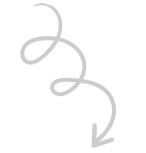First off, let me prompt you with a question.
Do you remember how you felt traveling with your family, friends, and loved ones? It’s an amazing experience, right? Having fun, doing activities, and going from one place to another.
Well, that is on the right side of the coin. How about on the flipped side?
Being alone in a foreign country where everyone’s a stranger to you? It’s just you and your strong will.
That is worse, right?
But think about what’s worse. You’re in the middle of nowhere, alone, and unaware of where you’ll go.
You’re lost.
Now, that is exactly how you’d feel when your team doesn’t have a significant tool to tell you what to do, where to go, and where you are standing.
In an organization, it is important that everyone is guided with a high and consistent process. The workflow management system should perform at its peak efficiency because sure, you already have your goals to meet.
But how are you going to achieve that?
Let’s go deeper and unfold that question in the latter part of this article.
What is a Kanban?
A Kanban Board is a project management tool used to maximize your resources, simplify communication, and help you manage your work efficiently. Formed from the Japanese word “visual signal,” Kanban is used to visualize your process and determine if there are bottlenecks that will possibly hamper the progress of the team, afterward.
As a traveler, this will serve as your map that will help you tell you how far you have traveled and how many more hours are there to reach your destination.
In using Kanban, you should be able to control and monitor all the tasks that were plotted, identify all the pain points, and immediately provide a solution that will prevent them from penetrating into your core processes.
Elements of Kanban Board
a. Visual Signals
- These are the work items that can be found usually on a visual card ( i.e., sticky notes, tickets, etc.) that streamlines what the team is currently working on. These cards provide you with all the details of the work such as title, card assignment, card type, and due date.
b. Columns
- Typically, this section is composed of three (3) parts namely: “To-Do,” “In Progress,” and “Complete.” This can be more complex depending on the end goal.
c. Work in Progress (WIP) Limits
- The WIP limit restricts the team from going beyond their capacity as it only has a maximum number of cards to be placed in a column. Cards should always be marked as complete before moving to the next column so as to let the team focus on finalizing first the current tasks before jumping into a new one. This is crucial because this is where bottlenecks usually become visible.
d. Commitment Point
- It is the point where the team has gathered enough information about the work, commits to deliver it, and is confident to initiate.
e. Delivery Point
- This is the last stage of the workflow where the product/service has already reached the customer and the cards have been moved out from the commitment point.
Now that we already have a clearer picture of Kanban, let’s move down to our next stop.
How Kanban offers optimum Productivity
Now that technology has dominated our society, sure enough, you have already heard about the tools that guarantee you an optimum result. But now, heads up cause I will tell you why Kanban is your ultimate ally.
1. It promotes transparency and accountability
When doing research work, it is impossible for the team to move forward without any resources at hand. Similarly, in working with a deliverable, your team needs to get a hold of an abundant pile of information. Otherwise, your work would be stagnant.
Hence, to maintain the team’s steady communication and collaboration, you need to devise an information repository that should be made accessible to everyone.
Now, that is how the Kanban system enters the scene.
After you plot the work items you need to achieve your goal, you get a clearer view of how things work. What is the status, are there any disruptions, and who is responsible for a specific task.
Kanban reduces poor communication and promotes improved productivity as the team becomes more aware of the general status of the workflow.
“If Kanban wasn’t there it would be a lot harder to keep track of what is on the backlog. What has been done or what is in progress and stuff.” This is according to the authors, Tanner and Duane, in their research entitled “The use of Kanban to Alleviate Collaboration and Communication Challenges of Global Software Development.”
2. It boosts time-efficiency
In between the busy schedules, oftentimes, we learn to unintentionally make an output out of hasty labor. This kind of issue usually compromises productivity and quality output.
With the use of Kanban, you produce an empowered team who knows how to accomplish work faster but with retained quality. This tool allows you to delegate tasks equally, therefore, it gives your team the freedom they need to complete a task without going under the pressure with time. Everyone is focused.
As Little’s Law has proven, “the fewer tasks you have in progress, the better your throughput is.” You just need to ensure that no cards should be left behind and columns shouldn’t have excess cards. Otherwise, the process might slow down and turn into a jam.
What’s more, not only does Kanban enable you to take on a task with ample time, but it also allows you to reduce the time you consume on unnecessary tasks such as for example, progress updates.
With Kanban, reporting an update to the team may not seem that important anymore. Just by having an overview of the workflow, you can already generate answers to your questions. Instead of scheduling and conducting regular meetings, Kanban offers a more convenient way of simplifying communication between the team.
3. Helps prioritize important tasks
Wherever you go, I bet everyone might prompt a similar answer when asked about ‘multitasking.’
Stressing.
Indeed, from working days and nights to the pressure of trying to meet the deadlines all at once. That’s what multitasking would look like. Or maybe even worse?
Now, to bail you out from that tight hustle, try to see your Kanban board where all your tasks were systematically streamlined. You’ll notice that every column has cards arranged properly. The card that was placed at the top is the main priority that you should devote your whole focus, attention, and efforts.
With Kanban, you’ll learn how to prioritize instead of having a mindset that goes “all tasks should be done all at once.” In the working environment, several tasks will be drifted in front of you day by day, but don’t start putting yourself on a battlefield.
Sure, hitting it all at once will provide you with a greater chance to strike your target easily. But an all-kill is not assured. There are still high chances that your gamble might backfire on you.
With Kanban, you can achieve a consistent flow of work and forbid yourself and the team from multitasking. Arranging a number of tasks in order, from the most prioritized down to the least, stops you from getting too overwhelmed with the tasks served on your plate and just limits you with what you’re capable of doing.
Do not attempt to dwell on various projects, instead, prioritize what is important and focus on it. That is how you increase productivity and reduce pressure.
4. Allows you to solve bottlenecks immediately
When doing schoolwork then suddenly you get lazy and procrastinate the next days, the assignment you left on your table half-done is what you called the “bottleneck.” It is a backlog of an unfinished task or unstarted work.
These bottlenecks can easily be spotted because if you see the overview of work status, you’ll notice a part where works are piling up. That’s where the pain points are.
Using Kanban, you can easily spot where the bottleneck is and exploit them immediately so as not to cause further complications to your workflow and improve the team’s productivity instead.
It’s always the downside of any organization that regardless of how well you plan, there is always a part where it would all go wrong. These kinds of scenarios are where we oftentimes lose track until it penetrates and impedes our core.
However, the best thing about using a Kanban board is it doesn’t allow bottlenecks to be built up in the first place. It keeps the work going and eliminates any kind of disruptions that might possibly occur and cause damage to your workflow.
As a team, it is normal to stumble many times, have slight miscommunications, and perform poor collaboration at work. However, there are a lot more ways to shove that negativity and stand up anew.
With Kanban running into every layer of the organization, a more motivated, efficient, and productive team would be most likely to be developed that will ultimately, help you to achieve your goals in the future.


 "
"



![Employee Intranet Portal – 6 Easy Steps to Build It [Office Communication]](https://woffice.io/wp-content/uploads/2025/03/Employee-intranet-for-office-communication.jpg)